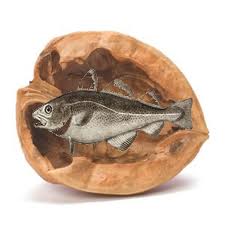Researchers found that wild European perch exposed to the anxiety-moderating drug oxazepam in an experimental pond in Sweden were less fearful and are more aggressive feeders.
Ecologists worry that such changes in fish behavior could lead to unexpected ecological consequences, including changing the composition of species in waterways and increasing the risk of potentially toxic algal blooms.
“This is only one of hundreds of kinds of [pharmaceutical drugs] that are passed through wastewater plants, and we don’t know what their environmental effects will be,” said study coauthor Micael Jonsson, an ecologist at Sweden’s Umea University.
The new study, detailed in this week’s issue of the journal Science, also found that water downstream from sewage treatment plants in Sweden contain concentrations of Oxazepam that experiments have shown are capable of changing fish behavior.
The findings add to a growing body of evidence that pharmaceutical drugs can do more than just poison fish or change their physical characteristics. An earlier study conducted by scientists in Minnesota at St. Cloud State University showed that fathead minnows exposed to various antidepressants in the laboratory were slower at avoiding predators.
This latest study expands the list of mood altering chemicals to a different class of drugs – those used to treat anxiety disorders.
“Before this, people had talked at [scientific] meetings about how you would expect this kind of drug to affect fish behavior, but what these researchers have done is show, very elegantly, how fish behavior has changed, and not just one aspect either, but several aspects,” said Patrick Phillips, a hydrologist with the U.S. Geological Survey in Troy, N.Y., who was not involved in the study.Perch are normally shy and hunt in schools. But Jonsson and his team found that those exposed to Oxazepam were bolder, less interested in hanging out with the group, and more likely to strike out on their own to explore novel, potentially dangerous areas.
“We were actually a bit surprised because [Oxazepam] is supposed have a soothing effect. Humans usually become calmer. But we saw the opposite in fish,” Jonsson said.
Normally, perch are constantly on the lookout for larger predator fish. The researchers speculate that the medicated perch are bolder because they are calmer.
“When they get exposed to this drug, they lose that inhibition, so they don’t care anymore,” Jonsson said.
Not only were the medicated perch braver, they also ate faster. In the long term, this combination of fearlessness and a larger appetite could lead to ecological disturbances that are hard to predict, scientists warn. Perch feed on tiny microorganisms called zooplankton, which in turn feed on algae.
“If the zooplankton decrease in number, the algae might increase, and you could have a situation where you have more algal blooms,” Jonsson said.
Alternatively, the perch population might actually decrease because drugs have made them foolhardy towards predators. But then again, “we don’t know how larger fish will react to this kind of medication,” Jonsson said.
There is also worry that some drug effects on wildlife won’t be apparent for years or decades.
“We’re just beginning to understand what the ultimate consequences may be from these kinds of exposures,” said research hydrologist Dana Kolpin, of the USGS Toxics Substances Hydrology Program, who also did not participate in the study.
According to scientists, it’s also likely that the ecological changes they worry about are already happening.
“It’s not all of a sudden that [medicines] are in the environment,” Kolpin said. “There are papers going back to the 1970s that say pharmaceuticals are potential environmental contaminants. We just didn’t have the analytical tools until more recently [to prove it].”
Most studies have shown that humans are unlikely to be affected by trace amounts of drugs in drinking water, but Kolpin suggests more research is needed.
“We just do not know enough about aspects such as sensitive populations” – including infants and pregnant women – “or effects from chronic exposures to complex chemical mixtures,” Kolpin said.
Jonsson and his team stressed that the solution to the problem is not to stop medicating ill people, but to develop ways for sewage treatment plants to capture environmentally hazardous drugs.
Experts say technology exists that can reduce, if not fully purge, drugs from waste water, but upgrading every waste treatment plant would be prohibitively expensive.
A more sensible, and realistic, approach would be to identify those classes of medicines that are most harmful to wildlife.
“We are realizing that some compounds are worse actors than others, and if we can identify those, then we can be more targeted in our approach for preventing their release into the environment,” Kolpin said.
Source: Inside Science.





![FISH-TOP-SLIDER[1]](http://purewatergazette.net/blog/wp-content/uploads/2013/02/FISH-TOP-SLIDER1-300x115.jpg)
